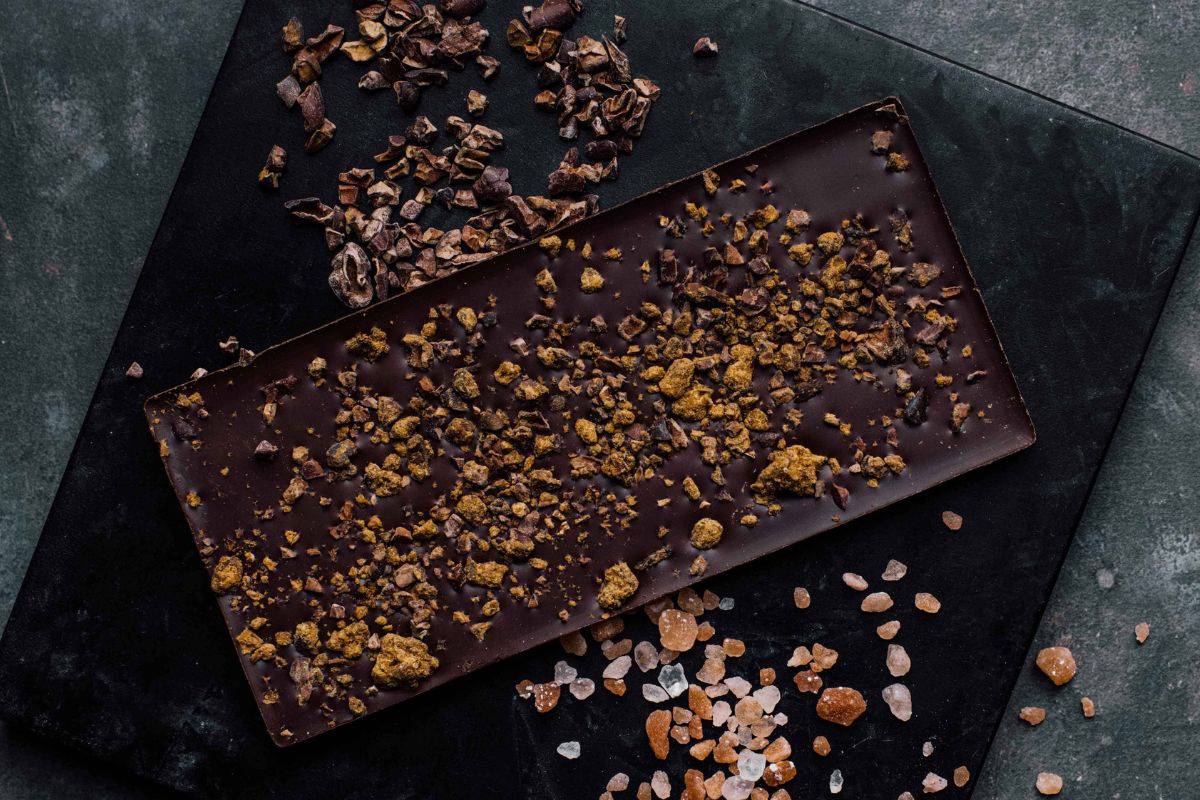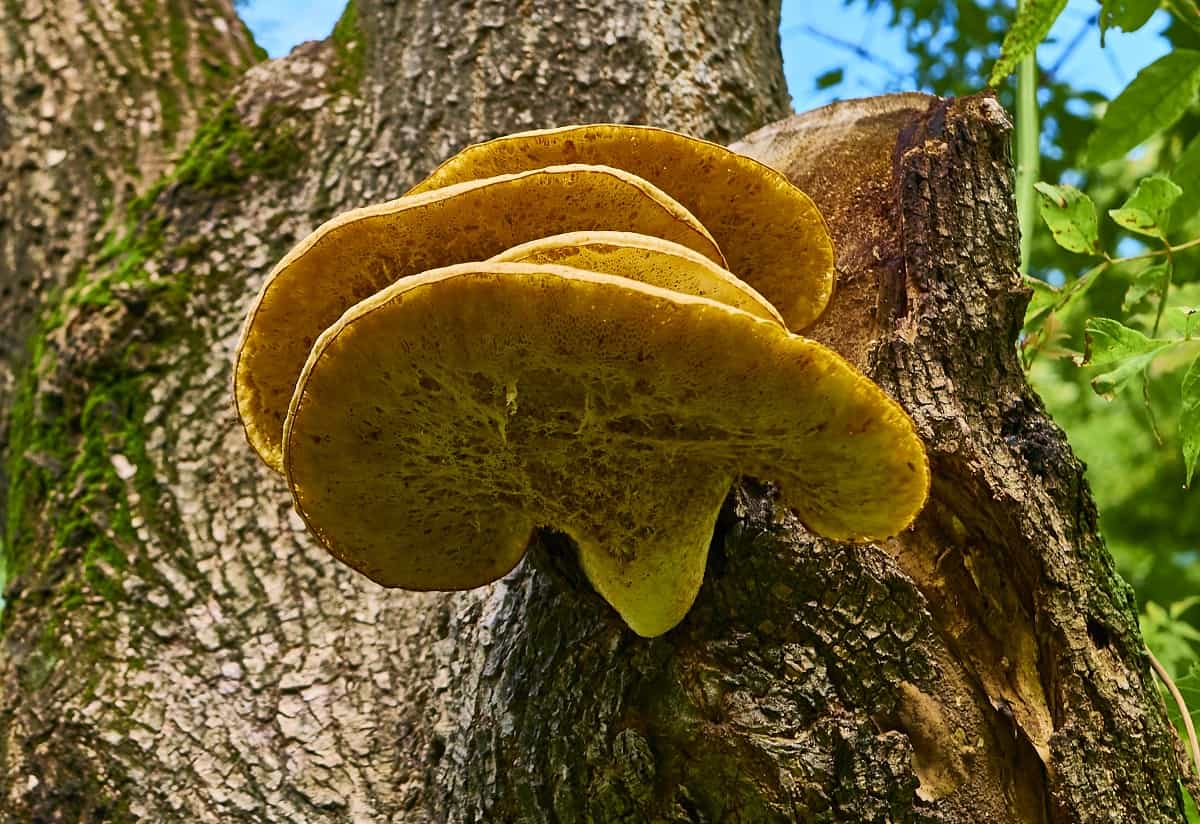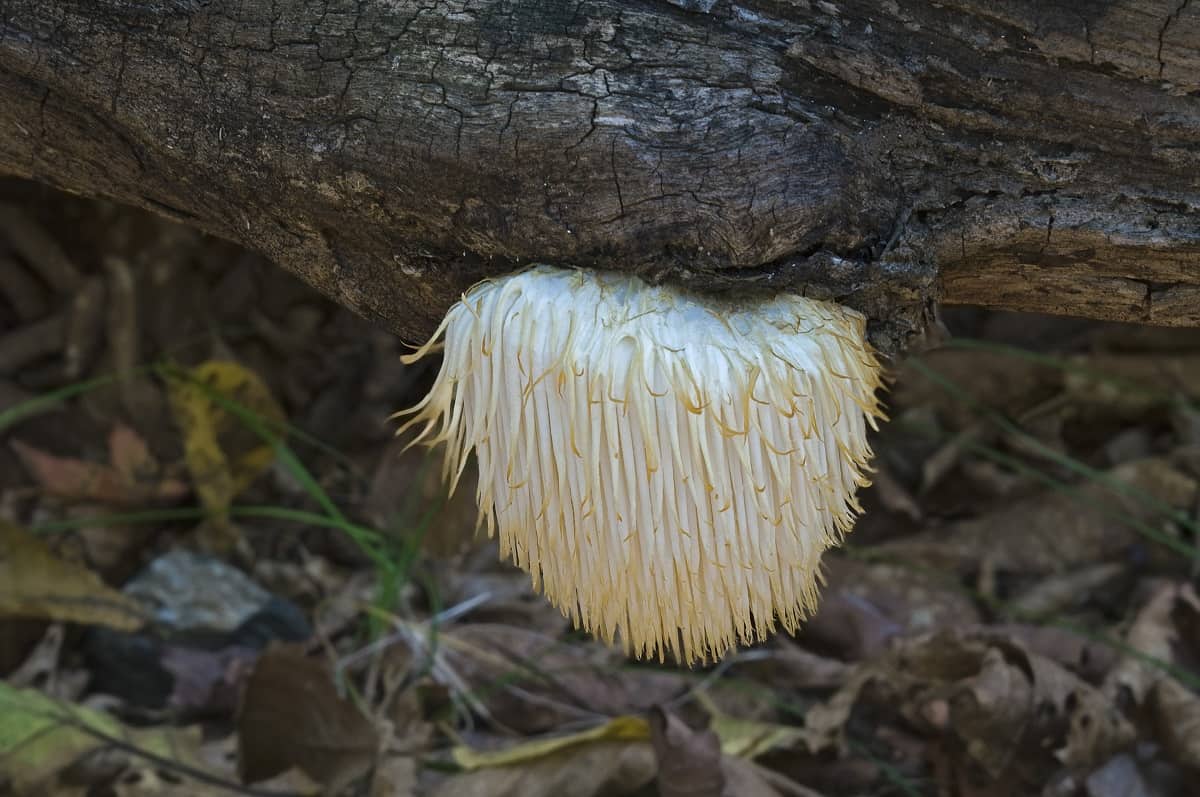Mushrooms have long been recognized as a nutritious, low-calorie, and sustainable food source. On top of their long history as a food source, mushrooms are essential in traditional medicine as they’re used for their therapeutic and healing characteristics.
What we know of these mushrooms today barely scratches the surface of what they’re truly capable of, not just medically but also recreationally. Luckily, medical science is actively working to change how we perceive mushrooms and how they can benefit us.
So, whether you’re seeking to understand the wave of adaptogenic mushroom chocolate drinks or medicinal applications of functional mushrooms in chocolate, I cover it all here.
Disclaimer: as with everything on this site, this article is provided for information only and does not constitute legal or medical advice. I strongly urge you to speak with your doctor or a licensed medical professional in order to assess whether or not various foodstuffs should be a part of your diet.

Jump to:
- 📚 History of Mushrooms & Chocolate
- 🎓 Three Main Types of Mushrooms
- 🌟 Prized and Specialty Mushrooms
- 😋 Functional Mushrooms in Chocolate
- 🍄 Ingredients to Make Mushroom Chocolate
- 👨🏻🍳 How to Make Mushroom Chocolates: Step-by-Step
- ☕ Functional Mushrooms in Beverages
- ⭐ Beneficial Mushroom Parts
- 🍫 Medicinal Mushroom Chocolate Bars
- ✔️ Functional Mushroom Chocolate Benefits
- 🍵 Functional Mushrooms Used in Beverages
- 🔪 How Mushrooms are Processed
- 🙋🏻♂️ Frequently Asked Questions
- 📖 Recipe
- 💬 Comments
📚 History of Mushrooms & Chocolate
Mushrooms have long been an intrinsic part of human society, with various cultures having used them for their culinary, medicinal, and even spiritual applications.
Historically, mushrooms such as truffles and morels are rare and have distinctive flavors, mainly reserved for refined palates and deep wallets.
In parallel, the extremely rare and precious variety of cacao, criollo, has long been praised and used by the Mayans and Aztecs for its exceptional flavor and aroma.
Mushroom and Cacao in Ancient Cultures
In 450 BCE, the Greek physician Hippocrates classified amadou mushrooms, scientifically called Fomes fomentarius, as a powerful anti-inflammatory and wound cauterizer.
In another part of the world, Ötzi the Iceman, who lived almost 5300 years ago in the European Alps, carried amadou with a birch polypore tied in a pouch to help him survive the northern Italian Alps.
In another distant part, the indigenous people of North America used puffball mushrooms, referred to as Calvatia genus in the scientific community, for wound remedy.
For millennia, the Chinese have valued mushrooms as a healthy food with many benefits. Tao Hongjing, a 5th-century Taoist master and physician, recorded various therapeutic mushrooms in the Shen Nong Ben Cao Jing.
Among these were xiang gu (Lentinus edodes or shiitake), ling zhi (Ganoderma lucidum or maitake), and zhu ling (Polyporus umbellatus).
Many ancient cultures have used mushrooms such as cordyceps, lion’s mane, maitake, and shiitake for medicinal and spiritual purposes, each possessing vast health advantages.

🎓 Three Main Types of Mushrooms
Some mushrooms can nourish you, some can heal you, while others can kill you (if you unluckily stumble upon a poisonous one). However, there are some mushrooms that can also send you on a spiritual journey due to their diverse chemical constituents.
There are three main types of mushrooms: edible, functional, and psychedelic. The first two form part of a healthy diet as a tasty snack or hefty meal that improves health and well-being. With the other, not so much.
Edible Mushrooms
Edible mushrooms are culinary favorites worldwide, adding umami flavor and satisfying textures to dishes; in some places they're even a popular meat substitute.
They can be enjoyed in numerous ways, such as grilled, sautéed, or in soups and sauces. Some, like shiitake and maitake, also offer medicinal benefits.
Functional Mushrooms
Functional mushrooms, or adaptogens, include varieties like reishi, turkey tail, chaga, cordyceps, and lion's mane. These are touted as superfoods for their health-promoting effects and are incorporated into diets as pills and powders, though they don't produce any psychoactive effects.
Psychedelic Mushrooms
Psilocybin mushrooms, or 'magic mushrooms,' contain psychoactive compounds such as psilocin that induce profound experiences and altered states when consumed, either fresh, dried, or powdered.
Historically used by ancient cultures for spiritual and healing purposes, their modern use is rather unregulated. Globally, many nations, under U.N. conventions, outlaw these mushrooms, with the U.S. classifying them as Schedule I drugs, barring clinical use.
Despite this, recreational use is on the rise, with promising research for treating addictions and mental health issues like depression and PTSD when taken under professional guidance.


🌟 Prized and Specialty Mushrooms
Prized mushrooms are rather a sub-variant of mushrooms as they are a more expensive variant of the typical mushroom. This natural food source is sustainable, valuable, and delicious, with some people consuming prized mushrooms like truffles for status, and others for their noted health benefits.
These various prized mushrooms are more scarce and expensive because they can’t be mass-produced and are only grown for a particular period of the year, making them difficult to harvest.
For several years now, there has been a surge in prized mushroom interest, with high-quality mushrooms becoming ever-so-increasingly available. The best and most costly mushrooms in the world grow only in the wild and are difficult or near-impossible to commercially cultivate.
Some top-quality mushrooms are the Yartsa gunbu mushrooms, European white truffles, and Japanese matsutake mushrooms.
These mushrooms are among the most expensive mushrooms in the world, with the Yartsa gunbu mushroom (Cordyceps sinensis) at $50,000 to 65,000 per pound, the European white truffle at $1,000 to $4,000 per pound, depending on the harvest, and the Japanese matsutake mushroom at $1,000 to $2,000 per pound.
😋 Functional Mushrooms in Chocolate
Many health food companies try to pack as many health advantages in their delicious food as possible. The use of mushrooms in traditional medicine to support wellness has been around for centuries.
With this in mind, it wasn’t hard to see why these companies were combining adaptogenic mushroom powders with various foods, as adaptogenic mushrooms are legal and aren’t psychoactive.
From this arose mushroom chocolate drinks, and eventually infused bars and truffles. No matter the form, the bitterness of mushrooms is masked by the chocolate, allowing the health benefits of both superfoods to be enjoyed in one pleasant bite.
This infusion is a popular way to eat adaptogenic mushrooms because it masks or even complements the flavor of the mushrooms and makes them easier to consume. While functional mushroom chocolate is still a new product, its popularity and perception continues to grow.

🍄 Ingredients to Make Mushroom Chocolate
Dark Chocolate: ideally high-quality chocolate with 70% cacao content or higher.
Dried Mushrooms: use any of your choice, but ensure that they're culinary mushrooms like shiitake, porcini, or morels.
A pinch of sea salt (optional)
Optional: you can add ins chopped nuts, dried fruit, or a sprinkle of cacao nibs.
See recipe card for exact measurements.
👨🏻🍳 How to Make Mushroom Chocolates: Step-by-Step
Step 1. Prepare a baking sheet or flat plate by lining it with parchment paper. This will be used to set your chocolate bars.
Step 2. Carefully clean the dried mushrooms to remove any residual debris. Using a sharp knife or a food processor, finely chop the mushrooms until they're small enough to be evenly distributed throughout the chocolate. I highly recommend a food processor so it can become almost like a powder. Set aside.
Step 3. Break or chop the dark chocolate into small, even pieces to ensure it melts uniformly. Place the chocolate in a heatproof bowl.
Step 4. Create a double boiler by bringing a pot of water to a simmer and placing the bowl of chocolate over the pot. The bottom of the bowl should not touch the water. Stir the chocolate continuously until it is completely melted and smooth. Alternatively, you can melt the chocolate in the microwave in 30-second intervals, stirring in between, but be careful not to burn it.

Step 5. Once the chocolate is melted, remove it from the heat. If you are using sea salt or any other add-ins like nuts or dried fruit, now is the time to stir them in along with the chopped, powdered mushrooms. Mix well to ensure even distribution.
Step 6. Pour the melted chocolate mixture onto the prepared parchment paper and use a spatula to spread it out into an even layer, about ¼ inch thick. Alternately, use a chocolate bar mold. Keep in mind that if you don't temper the chocolate before mixing in the mushrooms, it may set with a bit of whitish color, but this is fine and still safe to eat.
Step 7. If you wish, you can sprinkle the tops with additional sea salt, nuts, dried fruit, or cacao nibs for extra texture and flavor, then place the baking sheet or plate in the refrigerator and chill the chocolate for at least 1 hour, or until it is completely set.
Step 8. Once set, break or cut the chocolate into bars. The size of the bars is up to your preference, but your homemade mushroom chocolate bars are ready to be enjoyed. Store any leftovers in an airtight container in the refrigerator to keep them fresh.
Note that I don't recommend adding raw spices (with vanilla powder being an exception) to your mushroom chocolate bars, even if they work synergystically with your mushroom blend, as they'll retain their 'raw' taste and ruin your bars.

☕ Functional Mushrooms in Beverages
For many Americans, mushrooms weren’t paired with their beverage, as many felt the idea was too novel. Four Sigmatic was the first to offer adaptogenic mushroom powder-infused coffee. Their promise was to level up Americans' coffee-drinking experience.
The Finnish company launched its products in the US market in 2015, with them growing from mushroom coffee to elixirs, to hot chocolate mixes, and eventually to chocolate bars. Their mushroom synergy mix is typically four mushroom extracts, namely reishi, chaga, and cordyceps extracts.
In the same year, indie companies like Moon Juice and Sun Food also began incorporating functional mushrooms into their product lines. Moving to today, following much skepticism, the idea of adding functional mushrooms to diets was eventually appreciated for their potential health benefits.
Mushroom beverages come in a variety of flavors, including mushroom-infused teas and coffees (especially lattes), mushroom-based energy drinks, and even alcoholic beverages.
While some people appreciate the earthy flavor of mushrooms in their drinks, others prefer to utilize mushroom extracts and powders, small amounts of which can be added to any drink without changing the flavor.
⭐ Beneficial Mushroom Parts
A mushroom’s characteristics vary depending on the parts being used, as different parts of the mushroom may be more effective depending on the mushroom varietal.
To get the most out of mushrooms, selecting the optimal section of the mushroom, this being the fruiting body, mycelium, spores, or full spectrum (the entire mushroom), is critical.
The fruiting body has the highest concentration of active chemicals, such as beta-glucans. It’s typically what we would refer to as the mushroom itself. While mycelium is the thread that expands in search of nutrients before growing the actual mushroom.
Though this can vary as the fruiting body of the reishi mushroom, for example, is high in triterpenoids, whereas the mycelium, the thread-like network of cells that grows beneath the surface, is high in beta-glucans.
Similarly, shiitake mushroom spores (the reproductive cells of the mushroom) are high in ergothioneine, whereas the fruiting body is high in polysaccharides.
Chaga, a parasitic sclerotium, doesn’t have specific parts that are more beneficial than another, meaning it’s beneficial in its entirety.

🍫 Medicinal Mushroom Chocolate Bars
Pairing the nutty, earthy, or spiced flavors of mushrooms with the unique flavors of single-origin chocolate bars has become an ever-increasing trend. This type of chocolate has captured a niche group, targeting those primarily seeking natural, medicinal remedies and holistic wellness from these superfoods.
However some people believe that mushroom chocolate is a safe alternative for treating disorders, while others are concerned about the risks of ingesting a psychoactive substance at any mention of 'mushrooms.'
These worries are dispelled, though, as functional mushrooms, unlike psilocybin mushrooms, don’t offer any psychedelic aftereffects and are completely safe to consume on a daily basis.
This is backed by well-known chocolate makers now commonly including an acceptable amount of functional mushrooms in their products.
This can be anywhere between 1,000 mg - 4,000 mg, depending on the type. For example, reocmmended reishi mushroom consumption can be anywhere between 1,400-5,400 mg daily. This is equal to approximately 1 - 2 teaspoons (2 - 4 grams) of mushroom powder.
However, the benefits people seek don’t appear overnight, and it could take at least two weeks to detect the effects of functional mushrooms. It’s also recommended to take a week off every four to six months from consuming these mushroom-infused products.
Mushroom Chocolate For Cancer Relief
Cancer patients have to deal with the negative effects of chemotherapy, all while struggling to improve their health and immune system. These anti-cancer treatments have serious adverse effects, and some even develop resistance to these therapies.
With the availability of powders, products, and home decoctions, functional mushrooms can offer health and immune support in various different forms.
This is due to their anti-cancer properties, which can help reduce nausea, bone marrow suppression, anemia, and sleeplessness, as well as reduce medication resistance after chemotherapy and radiation therapy.
It’s these exact properties that have led many cancer patients to look to adaptogens and nootropics to negate these various side effects. They choose to complement chemotherapy and radiation treatment with these special classes of herbs, plants, and mushrooms.
Some mushrooms are adaptogens, while others are nootropics. The most potent mushrooms for immune modulation are chaga, turkey tail, cordyceps, lion’s mane, and maitake.
Water hyssop, L-theanine, citicoline, and Rhodiola rosea are some of these popular nootropics, while ginseng, tulsi, and ashwagandha are the popular adaptogens.
The following are some mushroom types that each possess their own unique healing properties to counter the various side effects of cancer-related issues and treatments.
The “vitality mushroom” cordyceps are sought-after for their energy-boosting effects. This endocrine regulator helps normalize the effects of stress on the thyroid, like adenosine.
Some mushrooms, particularly reishi, control asthma and reduce allergy symptoms. This mushroom helps strengthen respiratory functions and aids in improving oxygen use.
Lion’s mane has been a favorite antidepressant superfood for regenerating brain cells. It improves the functioning of the hippocampus and its ability to process memories and emotional responses.
Mushrooms, in general, help battle neurological illnesses such as Parkinson’s and Alzheimer’s, hypertension, and stroke. Polyphenols, terpenoids, alkaloids, sesquiterpenes, and polysaccharides are also compounds verified in various N.D. treatments.

✔️ Functional Mushroom Chocolate Benefits
Functional mushrooms have aptly earned the title 'superfood,' as these savory ingredients are not only flavorful but also high in nutrients and bioactive substances. This can help with immune system function, bone strength, and gut health as a whole.
This is in contrast to regular chocolate bars, which contain high levels of sugar, unhealthy fats, and other unwanted ingredients. These regular, processed chocolate bars diminish the other important nutrients in cacao.
Some of my favorite mushroom chocolate brands include:
- Four Sigmatic Mushroom Chocolate
- Real Mushrooms Dark Chocolate
Mushrooms also include beneficial substances such as polyphenols, carotenoids, lycopene, and polysaccharides. Polysaccharides vastly contribute to the many health benefits of adaptogenic mushrooms.
In fact, beta-glucans (a main form of mushroom polysaccharides) are dominating medical research. Its most intriguing potential is immunomodulation (immune response modulation). Beta-glucans also contain natural chemicals that have anti-cancer, anti-microbial, and antioxidant characteristics.
Mushrooms’ immune-supporting, anti-inflammatory and antioxidant properties are also present in mushroom chocolate bars. They can provide more health benefits beyond what is typically in commercial chocolate.
Not all mushrooms chocolate bars are created equal. When selecting between a mushroom chocolate bar and a regular chocolate bar, check for high-quality, minimally processed chocolate and other natural ingredients.

🍵 Functional Mushrooms Used in Beverages
Reishi
Reishi mushrooms (Ganoderma lucidum) are well-known for their therapeutic and immune-boosting effects. They're commonly used to promote general health and fitness and have an earthy and slightly bitter taste, with it being frequently added to a variety of beverages and dark chocolate.
Chaga
Chaga mushrooms (Inonotus obliquus) are high in antioxidants and are often used to help with immune function and overall health. Chaga has a somewhat bitter, nutty taste and is widely used to flavor coffee, other beverages, and white chocolate.
Lion’s Mane
Lion's Mane mushrooms (Hericium erinaceus) are well-known for their cognitive advantages. They're often used to improve brain function and memory and add a touch of sweetness to tea and other liquids.
Cordyceps
Cordyceps (Ophiocordyceps sinensis) has a slightly sweet and earthy flavor. These mushrooms are commonly used to flavor smoothies, other beverages, and milk chocolate.

🔪 How Mushrooms are Processed
Mushroom quality immediately declines after harvesting, so it’s essential that their processing is handled with care to preserve their nutrients. Signs include browning, moisture loss, texture changes, microbial contamination, loss of flavor, and nutrient density.
Post-harvest preservation techniques maintain quality and extend the shelf life of mushrooms, with drying magic mushrooms being an essential step in keeping their flavor and potency.
Pre-drying is a necessary step for removing excess moisture from fresh mushrooms before properly drying them. While air-drying mushrooms is the easiest, it’s difficult to manage consistency.
Dehydrating them or drying them with a desiccant (like silica gel) is ideal. After that, the active ingredient is typically extracted, purified, mixed with different excipients, and preserved.
After processing, mushrooms can be stored for up to a year in a cool, dry, and dark space. It’s ideal to tuck them away in the back of your cupboard and surround it with silica gel.

🙋🏻♂️ Frequently Asked Questions
Mushroom hot chocolate is generally considered to be good for you, as it combines the antioxidants and minerals from cacao with the potential benefits of functional mushrooms, which can include improved mental wellbeing and immune support.
Mushroom hot chocolate typically has lower caffeine content compared to regular hot chocolate, since mushrooms don't contain caffeine. However, the total caffeine content can vary depending on the amount of cacao used in the blend.
The best mushrooms to put in chocolate are often functional or "medicinal" varieties such as reishi, chaga, cordyceps, lion's mane, and turkey tail. You could use any one of these for their potential health benefits, ranging from immune support to cognitive enhancement.
Yes, you could theoretically use this recipe for shroom chocolate, but I've never actually tried it. Just be sure to dose your chocolate based on weight, if using such a strong inclusion.
Yes. You can absolutely follow this recipe with milk or white chocolate, though keep in mind that it might need less heating in the microwave than a dark chocolate would.
📖 Recipe

Functional Mushroom Chocolate Bars
Equipment
- food processor optional
- chocolate bar mold optional
- large chef's knife optional
- pot of water
- glass bowl
- baking sheet
- parchment paper
Ingredients
- 8 ounces high-quality dark chocolate 70% cacao or higher
- ½ cup finely chopped dried mushrooms (or 3 tablespoons mushroom powder) use any dry culinary mushrooms like shiitake, porcini, or morels
- pinch of sea salt optional
- optional add-ins: chopped nuts dried fruit, or a sprinkle of cacao nibs
Instructions
- Prepare a baking sheet or flat plate by lining it with parchment paper. This will be used to set your chocolate bars.
- Carefully clean the dried mushrooms to remove any residual debris. Using a sharp knife or a food processor, finely chop the mushrooms until they are small enough to be evenly distributed throughout the chocolate. I highly recommend a food processor so it can become almost like a powder. Set aside.
- Break or chop the dark chocolate into small, even pieces to ensure it melts uniformly. Place the chocolate in a heatproof bowl.
- Create a double boiler by bringing a pot of water to a simmer and placing the bowl of chocolate over the pot. The bottom of the bowl should not touch the water. Stir the chocolate continuously until it is completely melted and smooth. Alternatively, you can melt the chocolate in the microwave in 30-second intervals, stirring in between, but be careful not to burn it.
- Once the chocolate is melted, remove it from the heat. If you are using sea salt or any other add-ins like nuts or dried fruit, now is the time to stir them in along with the chopped, powdered mushrooms. Mix well to ensure even distribution.
- Pour the melted chocolate mixture onto the prepared parchment paper and use a spatula to spread it out into an even layer, about ¼ inch thick. Alternately, use a chocolate bar mold. Keep in mind that if you don't temper the chocolate before mixing in the mushrooms, it may set with a bit of whitish color, but this is fine and still safe to eat.
- If you wish, you can sprinkle the tops with additional sea salt, nuts, dried fruit, or cacao nibs for extra texture and flavor, then place the baking sheet or plate in the refrigerator and chill the chocolate for at least 1 hour, or until it is completely set.
- Once set, break or cut the chocolate into bars. The size of the bars is up to your preference, but your homemade mushroom chocolate bars are now ready to be enjoyed! Store any leftovers in an airtight container in the refrigerator to keep them fresh.


















Julie
I really enjoyed reading this article about mushrooms and chocolate—it was so interesting and helped me understand how mushrooms have been important for food and medicine for thousands of years. I didn’t know there were different types of mushrooms, like edible, functional, and psychedelic, and how some mushrooms are super rare and expensive. The way you explained the history and health benefits of functional mushrooms in chocolate made it easy to learn and made me excited to try some myself. You did a great job sharing so much useful information in a way that’s easy to follow and fun to read!
Max
Thank you for the kind comment; I'm glad you found it helpful!
Roman Teal
So interesting. Thank you for getting so in depth.
Max
My pleasure, Roman! Glad you found it helpful. 🙂